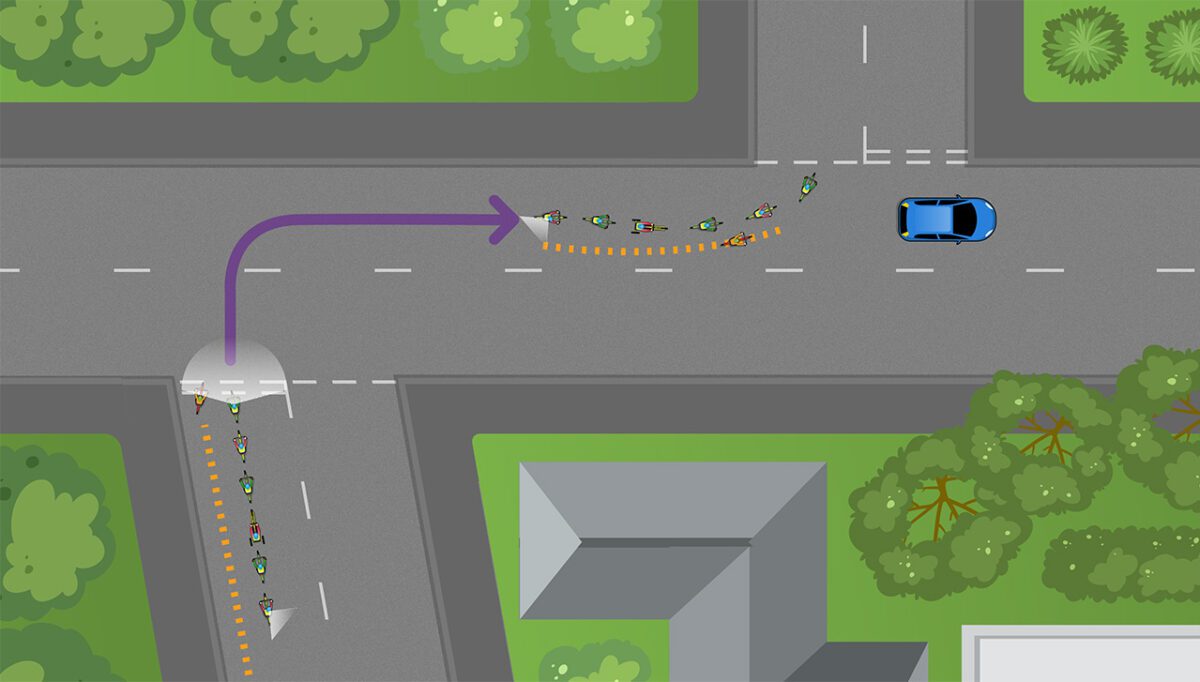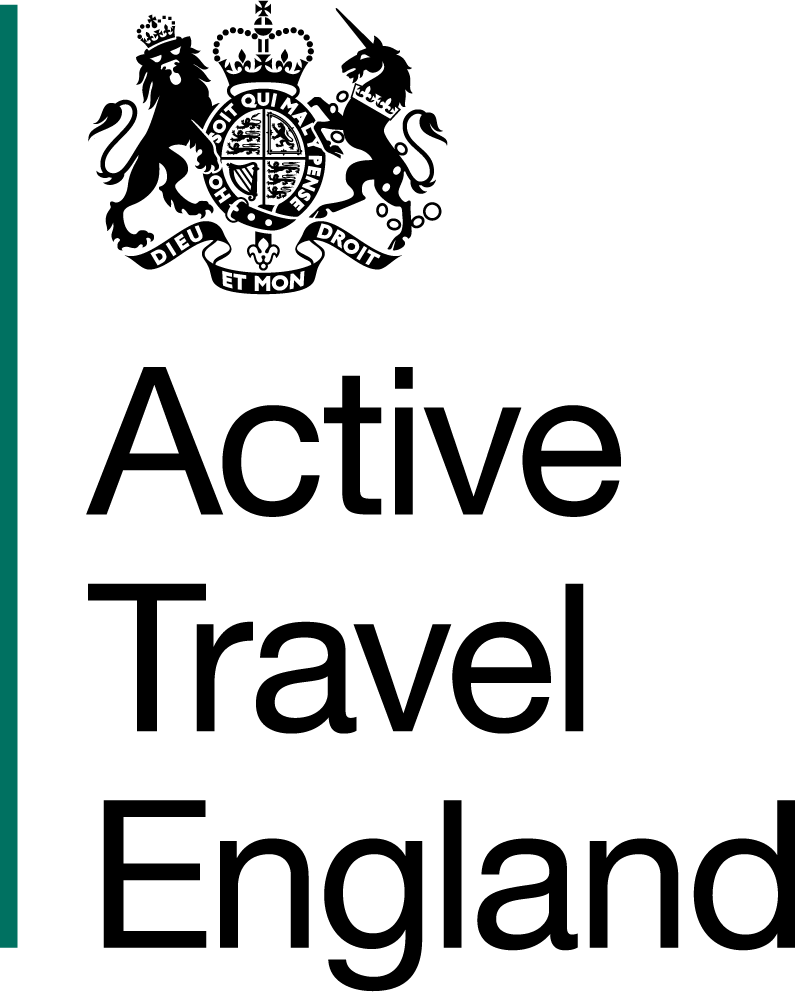7.3. Strategy 2: shepherding
Shepherding is where you move up to six riders with one instructor.
It’s different to snaking because the front rider does not follow an instructor. This means the leading rider is often the most responsible rider of the group, and should know how and where to position themselves on the road.
As the riders in your group continue to improve their skills, you can decide to change who you want to ride at the front. It’s your job to communicate the route to the front rider, or you can let them decide where to lead the group.
You need to be able to move around, changing positions along the line of riders to suit the situation. But most of the time, you will be at the back of the line, either slightly to the right of the riders or next to the rear rider. From this position, you can observe and communicate with the riders, while ensuring that drivers overtake the group only when it is safe to do so.
When approaching junctions where riders need to give way, you should move up to the front next to the lead rider. This allows you to see whether it’s clear for the riders to move through. You can then move back to the rear.


In this diagram the group is turning right into a major road, then left into a minor road. The instructor rides to the left at the first junction and right at the second junction to shepherd the group safely.
Shepherding can also be used to move individual riders. It can also be used as a teaching method.
What to do when shepherding:
- Ride behind the group, slightly to their right. This will protect them from other road users and ensure that drivers give enough space when overtaking.
- Move next to the riders at junctions to support them as they move through.
- Avoid filtering (passing a traffic queue) with your riders at least until you have taught them how and when to do this.
- Communicate with the group and encourage them.
As the riders gain more confidence, you can position yourself more directly behind them.
This way you don’t block their view and they are able to look back and communicate with other road users themselves.
You could even ride to their left to give them more independence. Just be sure to assess the risks for yourself as this position may put you close to parked cars.


In this diagram the instructor rides to the left to encourage independent decision making by the group.
